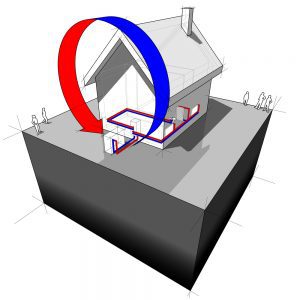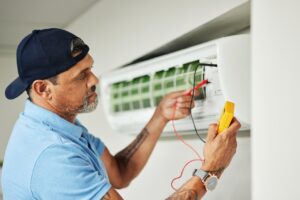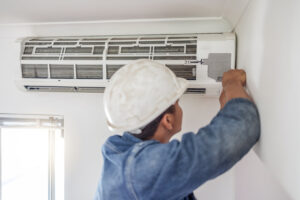Facts About Carbon Monoxide
Carbon monoxide can be an invisible threat to your family’s health and safety. Though more commonly associated with fires and automobile emissions, carbon monoxide poisoning can accumulate in any home unless certain precautions are taken. That’s why Lennox is getting the word out that carbon monoxide poisoning is preventable. To learn more facts about carbon monoxide, please scroll down.
What Is Carbon Monoxide?
Carbon monoxide (CO) is a colorless, odorless, tasteless gas that is produced by the incomplete combustion of fuels such as wood, natural gas, gasoline, diesel, kerosene, coal, and charcoal. It is caused by lack of oxygen or a disruption in the burning process. Household appliances such as your furnace, water heater, stove, space heaters, charcoal grill, or gas dryer can be sources of carbon monoxide, especially if they are not in proper working condition or have been installed improperly. Vehicle exhaust fumes from attached garages, as well as improperly operating fireplaces, also can become carbon monoxide hazards, particularly if your home is well-sealed for energy efficiency.
What Are The Effects Of Carbon Monoxide On The Human Body?
When we breathe, carbon monoxide combines with the red blood cells in the blood and displaces the oxygen our bodies need to survive. Carbon monoxide combines with the red blood cells over 200 times more easily than oxygen and creates a condition know as carboxyhemoglobin saturation. Carbon monoxide then gets carried to the vital organs through the bloodstream instead of oxygen. Our organ tissues require oxygen; without it, our bodies start to asphyxiate or suffocate. It takes the body much longer to eliminate carbon monoxide than to absorb it, which is one reason why exposure can be so dangerous.
What Are The Symptoms Of Carbon Monoxide Poisoning?
Unfortunately, the symptoms caused by carboxyhemoglobin saturation are easily overlooked because they are often flu-like. With mild exposure, most people experience headaches, fatigue, and nausea. Medium exposure can cause a severe throbbing headache, drowsiness, disorientation, confusion, and an accelerated heart rate. Extreme exposure can lead to unconsciousness, convulsions, cardiorespiratory failure, coma, and possibly death.
Why Are New, Well-Sealed Homes More Susceptible To Co-Poisoning?
Newer homes are better sealed to prevent air leakage, which reduces energy use. As a result, these homes limit ventilation of outside air. Normally, your home breathes in air from the outside to replace air being used in combustion appliances. If your home is too well sealed, these appliances may become starved for the air that allows them to operate properly. When that happens, vent reversal may occur. This condition is also known as “downdrafting,” which means that the appliances start drawing air down the vent or chimney, resulting in combustion byproducts entering the home.
In other words, if the burners become starved for oxygen, carbon monoxide can be introduced into the home. But even older, less insulated homes can be vulnerable to the threat of carbon monoxide poisoning, particularly if the appliances have been improperly installed or poorly maintained.
What Can Be Done To Protect Our Homes From The Danger Of Carbon Monoxide Poisoning?
Prevention is the most important step. Taking proper safety measures will reduce your risk of carbon monoxide poisoning. Because vehicles are a major cause of carbon monoxide poisoning, always back your car out of the garage to let it warm up. Never leave it running in the confined space of a garage, particularly if the garage is attached to the home. The same holds true for lawn movers and snowmobiles. Never use ovens or grills for heating devices.
Home heating systems represent only 5% of the many potential sources of carbon monoxide. They are designed to be safe, to be efficient, and to not produce substantial amounts of carbon monoxide. However, it is important to schedule annual maintenance visits by a qualified technician to check all the combustion appliances to make sure they are operating properly and to ensure that all chimneys and vents are connected properly and not blocked.
What Can Be Done About Detecting Carbon Monoxide In The Home?
The best method of detection is to use a carbon monoxide detector in your home. A carbon monoxide detector is a device very similar to a smoke alarm. It monitors the air for carbon monoxide and sounds an alarm if a specific level is detected. Ideally, you should have one detector adjacent to every living area in your home.
Carbon monoxide detectors are most efficient when used in combination with preventive maintenance. For more information on how your furnace or about purchasing a carbon monoxide detector, call your local independent Lennox dealer, Long Heating and Cooling.








